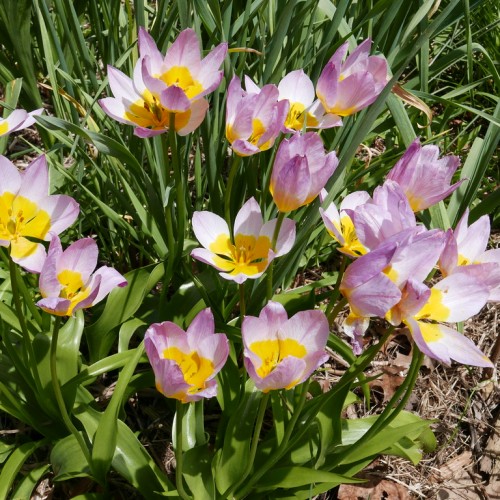
candia tulip
Tulipa saxatilis
Cycle:
Perennial
Watering:
Average
Hardiness Zone:
3 - 8
Flowers:
Flowers In Spring
Sun:
Full sun
Leaf:
Yes
Growth Rate:
Low
Maintenance:
Low
Drought Tolerant:
Yes
Salt Tolerant:
Yes
Care Level:
Medium
watering
The Tulipa saxatilis, commonly known as candia tulip, is a species of tulip native to Eurasia. The plant prefers full sun exposure and soil that is well-draining and neutral to slightly acidic. When it comes to watering, candia tulips should be kept lightly moist but not soggy. During the growing season (spring and early summer), water the plant regularly every 2-3 days or when the top 1-2 inches of soil appears dry. When the flower is in bloom (mid-spring to early summer), reduce the frequency of watering to avoid soggy soils and any potential problems with powdery mildew. For optimal flower growth and bloom, reduce watering slightly in late summer and early autumn. To begin the dormancy process during autumn and winter months, reduce the frequency of watering to ensure the soil remains barely moist at all times, allowing the topsoil to become almost completely dry in between watering. This will encourage the tulip to produce thicker underground stems and form strong, healthy, deep roots.
sunlight
Candia tulips (Tulipa saxatilis) prefer full sun to partial shade, with 6 to 8 hours of direct sunlight per day. They like to be grown in well-draining, neutral to alkaline soils. They should be planted in a sunny location with Southern exposure to maximize the amount of light available. Taking into account the natural changes of the sun due to seasons and daylight saving time, morning light should be considered the most important light for these plants. Morning sunlight is crucial for optimal growth since it provides energy needed for the day and is less intense than afternoon sun. When humidity is high, afternoon sun should be avoided since the intense heat can cause the leaves of the plant to scorch.
pruning
Candia tulips should be pruned in late-summer or early fall, after flowering has finished. Pruning should remove faded flower heads, as well as foliage that has become brown or discolored. It is important to prune back excess foliage, and also to thin out spindly and overcrowded stems. Pruning should aim to open up the center of the plant, to help improve air circulation and light penetration, and should remove dead or diseased material. When pruning, make sure to cut the stems close to ground level. To finish, shallow cultivation around the plants can help to reduce the risk of infection and improve the soil quality.
